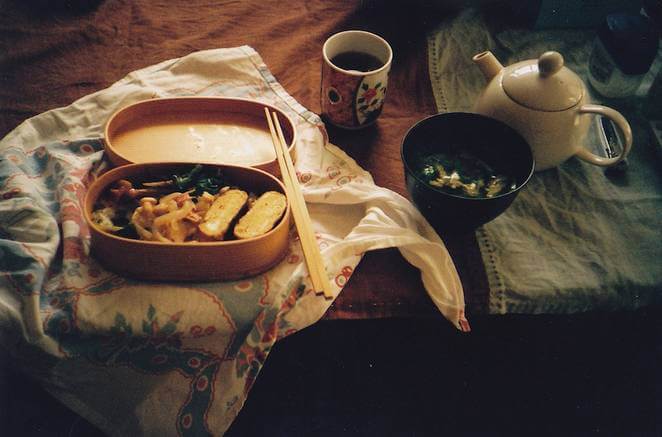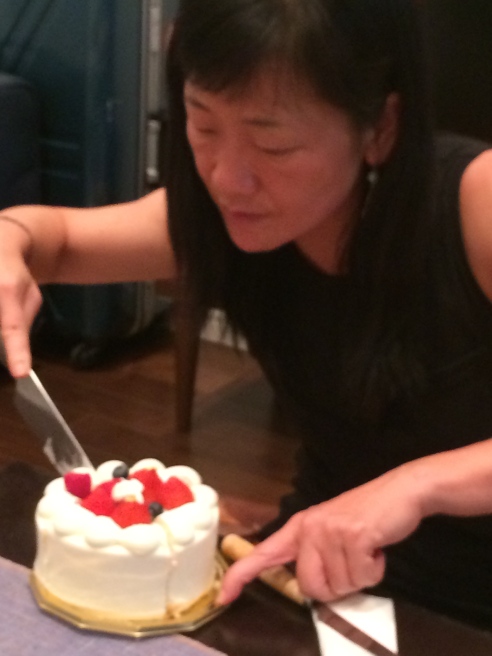The time-tested ways to get a quick exposure to a new country are to go grocery shopping and, if you are lucky enough, be invited to stay with a local. For example, a US grocery store visit quickly reveals national obsessions with teeth whitening, dieting, and red meat. A visit to a Japanese store reveals obsessions with germs, pickled ingredients, and adorably cute sweets in every possible form.
This weekend in Tokyo I was fortunate to be invited to stay with a Rakuten colleague/HR executive for two nights. I asked her permission to photo my experiences. Being a designer, I really only focused on the appliances and products in her home. I would have to stay a lot longer than two nights to really know anything meaningful about how she lived.
But here goes. Chizy is 49 and has lived in France, Pakistan, Sudan and is currently dividing her time between Boston and Tokyo. A few years ago she bought a house in the same neighborhood where she lived after university. It’s a quiet and calm west Tokyo location called Nishiogikubo with many small crafts shops and tiny charming restaurants lining the narrow dense streets.
This is Chizy’s own street. In contrast to most of Tokyo, Nishiogikubo is markedly low rise and homey.


Here is Chizy, serving cake after a small dinner gathering. It was interesting to me that she served a variety of store-bought small dishes as the dinner. It was kind of like an assemblage of appetizers, with one substantial dish in the form of roasted pork. I was happy for this efficiency as she had spent the Saturday in a training course and the last thing I wanted her to do was cook. It struck me that an American friend would probably have knocked herself out to prepare something homemade–and there would have been a great loss of conviviality sacrificed for that purpose. Chizy calmly served the array of tasty treats and was able to focus on the conversation rather than inventing a culinary extravaganza.
Her home is full of strange wonders, many electronic. It reinforced my perception that much of Japan is just slightly over-engineered, or over-featured, or over-personalized.
Here’s an example (I think). I had some time in Chizy’s home by myself and had half a mind to do a load of laundry, being out of clean clothes. One look at this “jet engine” dashboard on the washing machine and I decided my dirty duds would have to do.
As a business sidebar, this control panel reminds me of every Japanese PowerPoint I’ve ever seen. Japanese presentations are always ten times more complex than an American version. My Japanese colleagues seem totally comfortable with the density of information and I can only speculate that either 1) they fake that they understand their colleague’s work, or 2) they can take in complex visual information more easily than an English-language-reader, because at a young age they all learned to read a very complex pictographic alphabet, Kanji.
Speaking of complexity, any visitor to Japan knows the Ph.D it takes to use a toilet. Here is the wall-mounted control panel example from Chizy’s home. Just what button would you push to flush, anyway? (It’s not the orange one.)
This was a really cool feature of her sanitary fixtures: there is a tiny hand-washing sink right on top of the tank that starts flowing the perfect amount of water after a flush. The blue thing is a sanitizer doo-hickey. One odd thing is that in both private and public restrooms I rarely see hand soap. That is not consonant with the whole germaphobe Japanese society.
What is consonant is the ever-present pair of slippers in every Japanese bathroom. I am not quite sure their purpose and I forgot to ask. When I was raising young boys with bad aim though, I would have liked to follow that custom.

Here is Chizy’s living area and kitchen. We had dinner gathered around the coffee table. Her “office” is the little desk behind the plant. I was pleased to see that Japanese women really do have giant stuffed animals in their homes (note the green one) because we launched this same Japanese company as a Grommet. I always pray that our Discovery team is not duped when a foreign manufacturer tells us “This is very popular in our country.” I fear someone selling us the Japanese or Spanish or Australian equivalent of say, a Cabbage Patch Doll or Spam.






Chizy shared with me her precious supply of a fairly unusual breakfast treat: a paste made of sesame and honey, on toast. It was delicious. I wanted to bring some home as it is also meant to have health benefits. I also adore looking at the cartoony graphics. This new addition would complement my fanatical devotion to a weekend toast ritual. Below is what I usually have in the summer. (I love it so much I took a picture to remind me in the winter when I am stuck indoors with my Maine blueberry jam.)
This is the neighborhood restaurant where I subsequently had a delightful solo lunch. Re:gendo is in a very traditional building transported to this location and restored to a lustre. It’s operated by a cadre of sweet, pretty former housewives. In this singular place, I finally found my dream “local” Tokyo restaurant, nicely complemented by a small craft shop.
Chizy says there is another restaurant in the neighborhood manned by older women– “grandmothers” who are very slow and often screw up your order. But their warm charm and steady conversation are the draws to the establishment, not speed or accuracy. In contrast there is a small local bar owned a silent bartender where Chizy says she goes if she is tired of talking and just wants to slam down two drinks in peace.
I’ve been to Japan five times since last year. I’ll be back many times and I am hopeful that I was a good guest to Chizy so I can return to her lovely abode. One of the secrets to surviving this kind of travel, according to my globe-trotting Japanese colleagues, is to establish firm routines around the flights you take, the food you eat, where you stay and the public transport routes, and preserving your personal exercise routines.
I’ve not managed to find that balance on prior trips but I can now see a way to create a little bit of home in Chizy’s neighborhood. And maybe next time I will brave operating the washing machine.
_________________________________________________
About the Author
This article was written by Jules Pieri. Jules is the Co-Founder and CEO of the product launch platform The Grommet. The company’s Citizen Commerce™ movement is reshaping how consumer products get discovered, shared, and bought. see more.











































